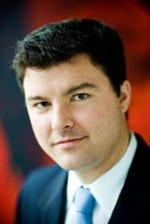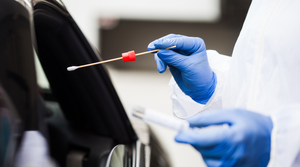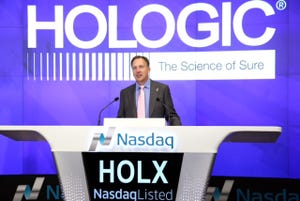First-to-File Update on Patent Law and its Effect on Medical Device Industry
Having a basic understanding of patent law is more important to those in the medical device and diagnostics industry now than it has ever been. Major recent changes to patent law change the playing field greatly. Of primary importance, as of March 16, 2013 the United States will no longer protect the rights of the first inventor because it will shift to a first-inventor-to-file (i.e., first inventor to file a patent application) system.
March 1, 2013
Having a basic understanding of patent law is more important to those in the medical device and diagnostics industry now than it has ever been. Major recent changes to patent law change the playing field greatly. Of primary importance, as of March 16, 2013 the United States will no longer protect the rights of the first inventor because it will shift to a first-inventor-to-file (i.e., first inventor to file a patent application) system. As a result, medical device and diagnostics inventors can no longer afford to let their invention disclosures sit in a file cabinet until the product development group is ready to proceed.
 Going forward, not only will patent filing decisions need to be completed quickly, but the entire traditional invention disclosure review process may also be replaced by simply filing provisional patent applications early and often. The new first-inventor-to-file system will benefit nimble innovators who win the race to the Patent Office. This significant change, however, is just one of the many outlined in the America Invents Act patent reform, which will be fully implemented as of March 19, 2013. Medical device and diagnostics companies should take care to educate themselves on the opportunities and pitfalls provided by this new legislation.
Going forward, not only will patent filing decisions need to be completed quickly, but the entire traditional invention disclosure review process may also be replaced by simply filing provisional patent applications early and often. The new first-inventor-to-file system will benefit nimble innovators who win the race to the Patent Office. This significant change, however, is just one of the many outlined in the America Invents Act patent reform, which will be fully implemented as of March 19, 2013. Medical device and diagnostics companies should take care to educate themselves on the opportunities and pitfalls provided by this new legislation.
Beyond new patent legislation, the US Supreme Court continues to hear record numbers of patent-related cases, some blazing new trails and others changing long-established precedent. For example, the Supreme Court recently ruled in Mayo Collaborative Services v. Prometheus Laboratories that a process for personalized medicine dosing was not patentable subject matter because it relied upon the naturally occurring effects of certain metabolites the human body’s blood instead of something that is un-naturally produced by man. And, in Association for Molecular Pathology v. Myriad Genetics, the Supreme Court will decide if isolated human genes can be patented. However, nearly all patent-related cases are first addressed by the US Court of Appeals for the Federal Circuit, which was established specifically to decide matters of patent law. For example, both Mayo and Myriad were appealed from the Federal Circuit. In fact, the Supreme Court often defers to the expertise of the Federal Circuit when deciding if or how to rule in patent matters. In addition to the Myriad case, several other recent Federal Circuit decisions that affect the medical device and diagnostics industry have been, or could be, appealed to the Supreme Court.
Edwards Lifesciences v. Medtronic Corevalve examined the enablement requirement for patent validity. Edwards Lifesciences claimed that Medtronic infringed its patent related to a transcatheter heart valve. In its defense, Medtronic argued that the patent was invalid because at the time the patent application was filed, the stent/valve prosthesis had only been implanted in pigs and underwent design changes after the application was filed, so it was not known if it would work in the described human applications. Specifically, a patent must be “sufficiently detailed to enable those skilled in the art to practice the invention.” Even though a working prototype is not necessary, if a “person of ordinary skill in the art” could not make and use the invention from the disclosure of the patent without, at most, some routine experimentation, the patent is invalid. Some example criteria that courts have used for determining enablement include: quantity of experimentation, amount of direction or guidance necessary, presence or absence of working examples, nature of the invention, state of the prior art, relative skill of those in the art, predictability of the art and the breadth of the claims. Additionally, the courts have concluded that when experimentation on human subjects is inappropriate, as it can be with medical devices, animal testing or in vitro data can satisfy the enablement requirement. For these reasons, the Federal Circuit ruled that the Edwards Lifesciences patent was not invalid because lack of enablement had not been proven by clear and convincing evidence. This case may not make it to the Supreme Court, because the recently passed America Invents Act patent reform abolishes lack of enablement arguments from invalidity proceedings. However, the US Patent Office still requires sufficient enablement to be provided during patent application examination. As a result, when preparing a new patent application, medical device and diagnostics inventors should take care to provide a sufficiently enabled description.
In a combined opinion, the Federal Circuit ruled in Akamai Technologies v. Limelight Networks and McKesson Technologies v. Epic Systems that liability for inducement of divided patent infringement of method/process patent claims applies whether or not the multiple parties acting to complete the infringement have an agency (i.e., direct or control) relationship. With method/process patent claims, each step must be completed in order to satisfy direct infringement. And, oftentimes with processes undertaken by the medical device and diagnostics industry, for example design and inspection, the steps may be completed by different, even unrelated, parties. Similarly, a service provider or product manufacturer may require a purchaser to complete one or more steps in order for operation. With this ruling, however, the Federal Circuit has stated that simply knowing of a patent and then inducing the performance of each of the steps in the patent qualifies as patent infringement by the inducer. As a result, any entity which provides or uses medical devices or diagnostics that might be used in a patented process must now be aware that infringement can occur even if multiple parties are required to perform the complete process. The rule is different for product patent claims (as opposed to method claims), in which the entity that adds the final element to the combination is the infringer even if others make portions of the product. This ruling has been appealed and is awaiting a decision on whether the Supreme Court will take it up.
In Ninestar Technology v. International Trade Commission, the Federal Circuit ruled that products produced or sold outside the US can still infringe a US patent if then imported into the US. This ruling addresses the defense to patent infringement stating that patent rights are exhausted with respect to a product that has been sold within the US, even if it was produced abroad. In a strikingly similar case involving exhaustion of copyrights under the first sale doctrine defense, the US Court of Appeals for the 2nd Circuit ruled in John Wiley & Sons v. Kirtsaeng that the sale of foreign-produced material outside of the US did not exhaust US copyright protection for that material. With the increasing global marketplace, medical device and diagnostics entities are seeking to reduce cost by manufacturing abroad and likewise are seeking to increase revenue through sales to overseas markets. Correspondingly, importation of foreign-made-and-sold or foreign-refurbished goods by third parties into the US for resale is occurring more frequently. However, these decisions clearly state that products produced and sold outside the US can still infringe US patents or copyrights if then imported for sale into the US. These rulings are also awaiting a decision whether the Supreme Court will take them on appeal.
Between the Federal Circuit, the US Supreme Court and the implementation of the recent America Invents Act patent reform, patent law continues to evolve and is playing a growing level of importance in the economy.
Clark A.D. Wilson is a patent attorney and Partner at the Atlanta-based Intellectual Property law firm Gardner Groff Greenwald & Villanueva PC. Mr. Wilson has experience as an in-house patent attorney for a Novartis medical device unit and currently represents several medical device innovators in patent and trademark matters. Mr. Wilson is a member of the Georgia Bar and the Florida Bar, and is Board Certified in IP Law. Clark is set to complete a Master’s degree in Bioengineering in May, 2013.
About the Author(s)
You May Also Like


